

... Steve Englehart
By Scott Stilphen
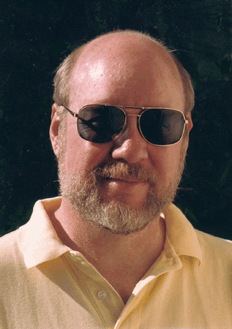
After beginning his career writing adventure stories for comics, Steve joined Atari in 1982 as a manual writer/design consultant for several Atari 8-bit games. After the Tramiel takeover, Steve worked at Activision as both a game designer and documentation manager.
DP: You came from a successful background, writing comics for both D.C. and Marvel. What inspired you to go into game design?
Steve Englehart: It was offered to me. I had written a novel for Dell and had a contract for another, which I intended to set in the then-hot new realm of Silicon Valley. I contacted a friend of mine, Ted Richards, who worked at Atari, to get info for my novel, and he ended up talking me into coming to work for them, because of my comics background. I saw it as another way to use my graphic story-telling skills, so it made sense.
In my first year, I was sort
of a Jack of all trades, being the only “fantasy writer with a track record in
other media” guy around, so I was brought in for bits and pieces on a lot of
things.
DP: You mention on your website that 6 months after joining Atari, it went into a steep decline. Would this be in reference to the infamous Wall Street announcement in December 1982?
Steve Englehart: I started in June 1982, and it was
indeed at the Christmas party in '82 when we heard how bad things were, and it
was June '84 when we were all flushed out.
DP: What were the hours in your department? Was your schedule fixed (i.e. 9 to 5) or could you basically come and go as you pleased?
Steve Englehart: Atari was run as a business - not always to its benefit - so we had set hours, 9 to 5. This was, as I said, very early in the span of video games, so many companies were run on a traditional plan, and Atari, which by then was a subsidiary of Warner, was definitely a top-down organization. That said, within the organization, the games groups carved out their own areas of freedom. We arrived at 9 and left at 5 (more or less), but during the day we’d roam around Atari and around the valley as needed to get whatever we needed to pull together our ideas. And Atari had people like Chris Crawford and Brenda Laurel to work their magic within the system. It was very much a transitionary phase in game development
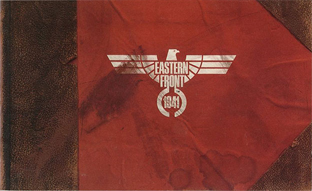 DP: At Atari, you wrote
the manual for Eastern Front (Atari XL version), among others, and were part of the
design teams who did E.T. Phone Home! and Final Legacy. You state on your website
that E.T. was noted for a couple of “firsts” – first game designed by a team,
and the first game to use digitized voice - but that only about 1/4th of the original
design ended up in the final version. Why was that? Do you recall what elements
were cut from it?
DP: At Atari, you wrote
the manual for Eastern Front (Atari XL version), among others, and were part of the
design teams who did E.T. Phone Home! and Final Legacy. You state on your website
that E.T. was noted for a couple of “firsts” – first game designed by a team,
and the first game to use digitized voice - but that only about 1/4th of the original
design ended up in the final version. Why was that? Do you recall what elements
were cut from it?
Steve Englehart: The cuts came because we ran out of
time. As a new game designer, I envisioned far more than could be done in the
time allotted, and even though I was working with people who had been involved
longer, we all had visions of moving far beyond what was currently being done.
So we crafted a big game and had to settle in the end for something much
smaller. But our E.T., for the computer, was a success - as opposed to the
infamous E.T. for the VCS - so that became the way we continued to work. Every
game we did, we thought big - now knowing that we wouldn’t be able to do
everything we thought of - and then consciously took the best parts to forge
into the released game.
I don’t really remember after all this time what was cut, but I know we had
Elliot traveling all over his neighborhood having different adventures based on
the film. Obviously, his travels were curtailed.
DP: As everyone knows, the VCS version of E.T. was developed under an extreme development schedule and rushed out to market in time for the holiday season. Obviously the computer version wasn’t under such deadlines, and as a result, it’s a much better-designed game. Why wasn’t Atari compelled to have the computer version out at the same time? Do you recall when it was released?
Steve Englehart: Not really. Maybe it was just me, but I lived inside those games while I was working on them, and didn’t pay much attention to what happened afterward. And I doubt I ever knew what the contracts called for. I do think that we always knew we had a certain amount of time to do the game, meaning they didn’t shorten our deadline. Our inability to do what we wanted within the time was not a function of the time being cut. So the computer version of E.T. came out when it was supposed to.
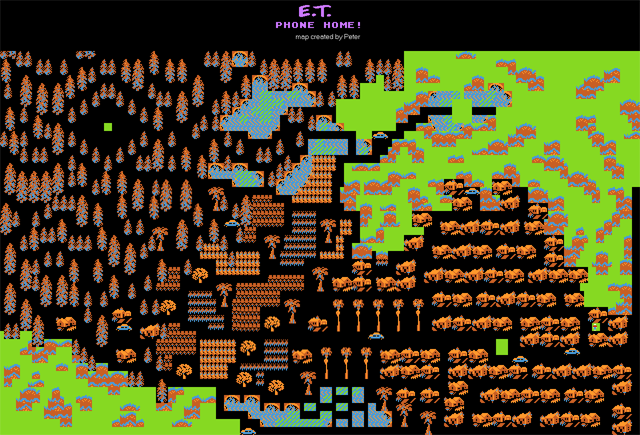
E.T. Phone Home! world map.
DP: You’ve also stated
that Final Legacy only included about half of the action sequences that were
designed for it. Do you recall what the missing parts were?
Steve Englehart: Not any more. :-) The problem here is I haven’t been involved in game design for a number of years, so I haven’t had occasion to keep this stuff in memory.
DP: The Final Legacy screenshots on your website appear to be from an ST version. Did you work on this version as well, and does it include the parts that were left out of the computer version? Was this the only ST game you were involved with?
Steve Englehart: Sorry, I have no idea.
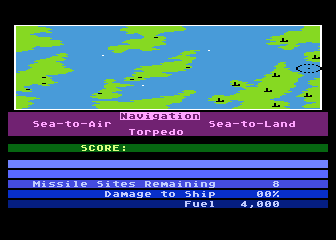
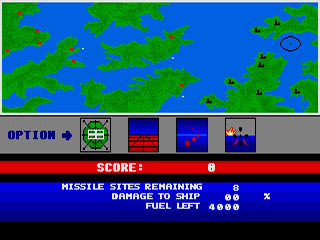
LEFT: 8-bit version of Final Legacy. RIGHT: ST version of Final Legacy.
DP: You’ve also worked at several other game companies over the years – Activision, Electronic Arts, Sega, and Brøderbund. What were your experiences working at each? Was the design process the same?
Steve Englehart: When Jack Tramiel bought Atari and
fired most of its employees overnight, I started writing comics for the second
time, but continued to design games as a freelancer. Later I joined Activision
as a Game designer and Documentation Manager. After Activision moved to LA I
returned to freelancing. My most recent staff position was with Games.com
(twice).
Activision was fun. I was a game designer and documents manager there, so I was
involved in two different but connected parts of the process. The game business
was eight years farther along then, so there was a lot more latitude in design
possibilities. And they’d bought Infocom, whose games I had loved. But the
company was not successful in those years; they kept telling us they were
“poised for success.” Eventually they moved to LA and got successful, without
us.
(Funny story about how I got that job. I was offered a job with Sierra Online,
but it was a requirement of that job that I move to the California foothills
where the company was located. I didn’t want to do that, but the job offer was
great - so I contacted companies in the Bay Area where I live and said, “Would
you like to match this offer and save me from having to move?” Activision did
that. And this is nothing against Sierra Online. They were a great company apart
from the requirement of living on site.)
EA was a weird time, and probably introduced me to an evolution in game design
that I didn’t much like. I was brought into work on Bard’s Tale IV, and, with
all the background I’ve sketched in above, as a fantasy writer and a game
designer, I approached it the same way I always had - to be as creative as
possible. So we had a group meeting at one point, and the producer said, “We’re
going to do thus and so,” and I said, “I don’t think that’ll work.” The room got
very quiet, and afterward, the art director took me aside and told me, “We never
say ‘no’ to the producer.” People reading this today may think that’s ridiculous
or may think that’s a matter of course, but it was not an environment I could
thrive in - and of course, EA didn’t do too badly under that system.
Sega was worse than that - the single worst experience I had in the business. A
producer there told me he and I were going to team up and do a series of games
together, so I came up with a complete design for the first of those games. I
drove to the offices in South San Francisco, sat in the room with the guy and
gave him the design - and he said, “Thanks. I’m going to hand this off to a
house in
Texas to develop. You’re all done here.” I said, “What?” And he said - I’ll
never forget this - “Hey, it’s just business. I guarantee you’ll do the same to
someone else some day.”
It’s also fair to say that I did the Spider-Man game with a different producer
there previously, and had a great experience on that.
But I thought what that first guy did to me was about as low as it could get,
until DC Comics did it to me for far bigger stakes on The Dark Knight film.
Brøderbund, thank God, was fun. They had the Carmen Sandiego franchise and were
exploring something similar for older kids. I worked up a game based on Mark
Twain’s writings - Tom Sawyer, Huck Finn, Connecticut Yankee in King Arthur’s
Court. Lots of fun from the writing end, and a nice sense of doing something
that would benefit kids outside the usual demographic.
I also worked for Disney (Buena Vista), writing the story for Tron 2.0 with the
producer and the design house. That one played to all my strengths as a fantasy
writer. There was talk at the time that Disney might do another Tron movie, and
we set out to make our game a movie, essentially. It’s an entertaining story and
an entertaining game.
My last work in the field brought me full circle, to Atari Labs. Atari Labs was
a think tank for Atari, real cutting edge stuff, with the added attraction, for
me, of discovering how magical the name “Atari” was to a later generation. The
pizza delivery guys would be in awe…
DP: When did you
start/leave Atari Labs? What projects did you work on?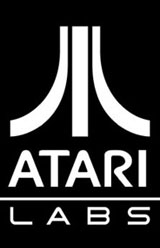
Steve Englehart: Atari Labs was a group of 6-8 people
in a loft in San Francisco. I'm not sure when they got up and running. I joined
in 2002 and was only there for six weeks before Infogrames shut us down. I think
it must have been in the summertime because I walked from my commute stop to the
offices every day, but I can't place it any more clearly than that. I was
working on a project called The Tribe, which was an interconnected group
of characters, a subset of whom would appear in every Atari game. The idea was,
you'd have your jock for your auto racing game, but he'd mention that he had a
sister, and then, in some other game, a female character would mention that she
had a brother — and over time, you'd find that the entire Atari line existed in
the same universe. I had devised an all-purpose set of characters and created a
complete back story, and a universe that could encompass anything from
first-person shooters to epic fantasies — and then they shut us down. But I
still think it was an incredible concept, and I would have loved to implement
it.
The last thing we were working on, on the last day before they canned us, was
how to retrofit movie theatre seats so the audience could play games on the
screen between films. What sort of games, what sort of controls…
DP: Which of your titles are your favorite, and what types of games in general?
Steve Englehart: I tend to prefer games with stories (and, even better, well-developed characters) rather than shooters. My favorite of my own titles is probably All Hallows’ Eve, which I developed with my ex-boss at Atari, Chris Horseman, after we both had left the company.
DP: Have you stayed in
touch with any of your former video game co-workers?
Steve Englehart: I run into people now and again, but most of them stayed in the field while I moved on to other things, so our paths don’t cross much. Chris was in town for a project a while ago and we caught dinner but that’s about it.
DP: What are your thoughts on how the game industry has evolved?
Steve Englehart: When Atari was sold and we were all let go, I predicted that that was the end of video games. Just a few months later, Nintendo appeared. So you can see what my thoughts are worth.
DP: As a huge fan of Burton’s original Batman movie, I have to ask… what’s your opinion of the various sequels that have followed it, including the latest revamping with Nolan/Bale?
Steve Englehart: Well, that original film, and the latest (Dark Knight) were both based on my stories, and they’re generally considered the best two films, so it’s safe to say I agree with that. The 90s films went progressively downhill as they moved away from my vision, and the reboot was a very ballsy call. Unfortunately, as mentioned above, my writing for The Dark Knight was obtained under false pretenses - I was told I was writing a comic but the script was used for the film - so I have a very dim view of Warner business practices.
DP: You mentioned
writing the story for the game Tron 2.0. Now that the new Tron movie, Tron
Legacy, has been released, what's your opinion of it? Does it incorporate any of
your ideas?
Steve Englehart: I actually haven't seen it, but from
what I hear, it doesn't overlap except in the obvious ways: we now need the
hero's son for the current scenario, he meets a girl, they have light-cycle
duels… Given that there are certain prerequisites to doing Tron, and it has to
take place inside the Tron universe, no designer could stray too far from any
other designer, but I honestly don't think we trod the same path. (When it comes
around on cable, I may change my mind, but for now, I don't think so .)
As an added bonus, Steve Englehart is making available a game concept for the Atari 400/800/5200 he created in 1984 called Skitzo.
To learn more about Steve's career, both in and out of the video game industry, check out his site at: http://www.steveenglehart.com/index.html